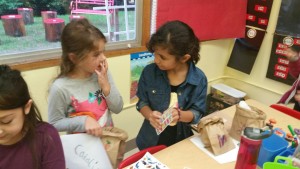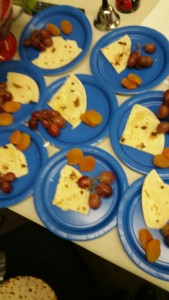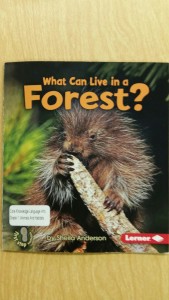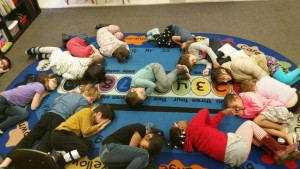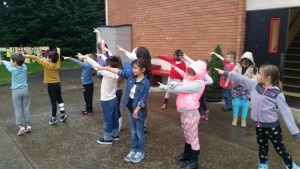Literatura
This week we read Se dice due res goloso and La gata Maroma. Both these poems were great examples of rhyme. Our weekly objectives were:
- listen and respond to the poems
- substitute target sounds to create new words
- practice the skill of visualizing (imagine or picture what is happening in a story)
- identify rhyming words and clap the rhythm of each word
- identify repeated words
- identify and segment final consonant sounds (important in reading and writing!)
- introduction to the writing process: plan. We’ve made lists and now we made a plan for writing about ourselves.
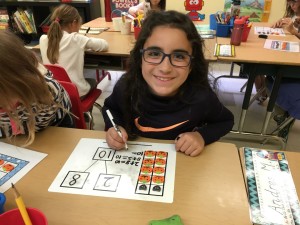 Matemáticas
Matemáticas
This week in math we jumped into subtraction and we had a blast with our halloween themed tens frames and number families. We are working on using our number bonds to help us create number families. The kiddos had a great time crafting their own haunted house for their number families. These are on display in the hallway. Please note the kiddos did a fantastic job following directions on this task. They had to glue on the sides of all windows and place them just right in order to fit correctly on the houses. Many times, crafts are about the academic piece AND following directions! Our learning objectives were:
- to explore different ways to subtract: quitar, restar (by crossing out pictures), menos (-), enunciado de resta (5-3=2), menos que (3 is less than 5)
- to show subtraction with concrete objects like cubes and our number boxes
- counting backwards with and without the number line (the opposite of counting on with addition)
History & Geography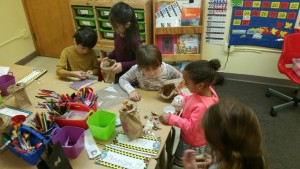
We finished our unit on Mesopotamia this week. We reviewed what weve learned so far about Mesopotamia and what it takes to make up a civilization. On Thursday the class had a great time with Market Day, trading goods and sampling some Mesopotamian type foods.
Our objectives this week were to
• locate the area known as Mesopotamia on a world map or globe, and identify it as part of Asia
• identify farming, cities, religion, leaders and writing as key factors to the development of a civilization.
• identify Mesopotamia as the cradle of civilization
• review the importance of the Tigris and the Euphrates rivers to Mesopotamia
Science
This week in our Animals and Their Habitats domain we read about the temperate deciduous forest and the animals that live there. We’ve compared deciduous trees to evergreens in our own schools back yard. We also looked for Animals near our school that might be found in a
Our objectives this week were to:
• understand that living things live in habitats to which they are particularly suited
• understand that living things live in habitats to which they are particularly suited
• identify the characteristics of the temperate deciduous forest habitat
• explain how temperate deciduous forest animals have adapted to the temperate deciduous forest habitat
• classify animals on the basis of the types of food that they eat (herbivore, carnivore, omnivore)
English Word Work
in spelling the Red group worked on j and k sounds, the Blue group had the et and en family words, and the Green group had the word families ill, ell, and all. In our journals we wrote about what makes Mesopotamia a civilization. Our word wall words this week were: may, me, my, no, now, not, or, of, off, on. Our vocabulary words this week were: species, temperate, and hibernate.

